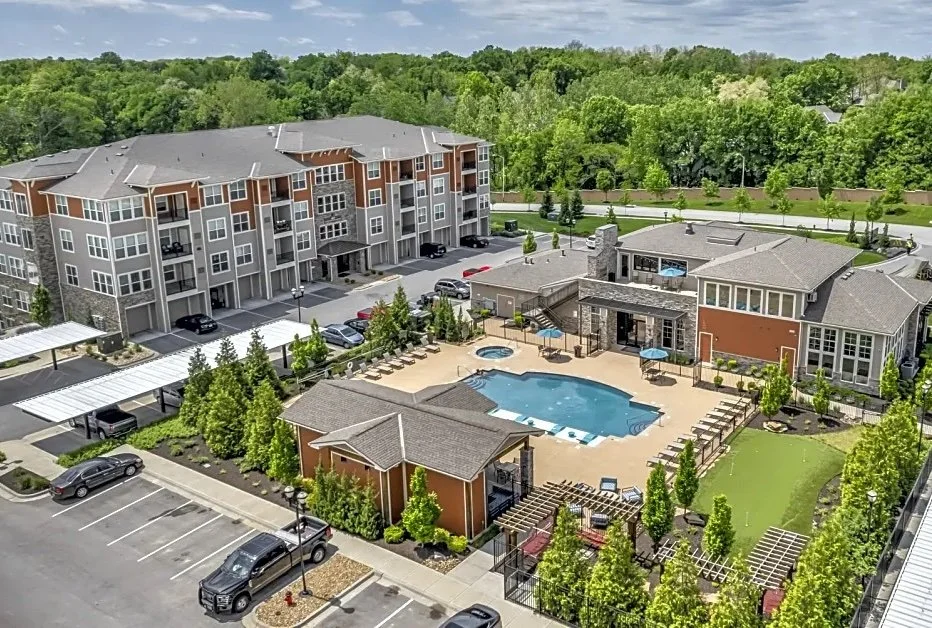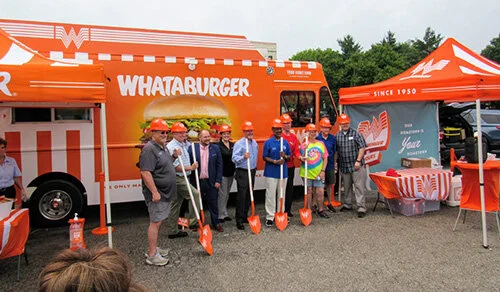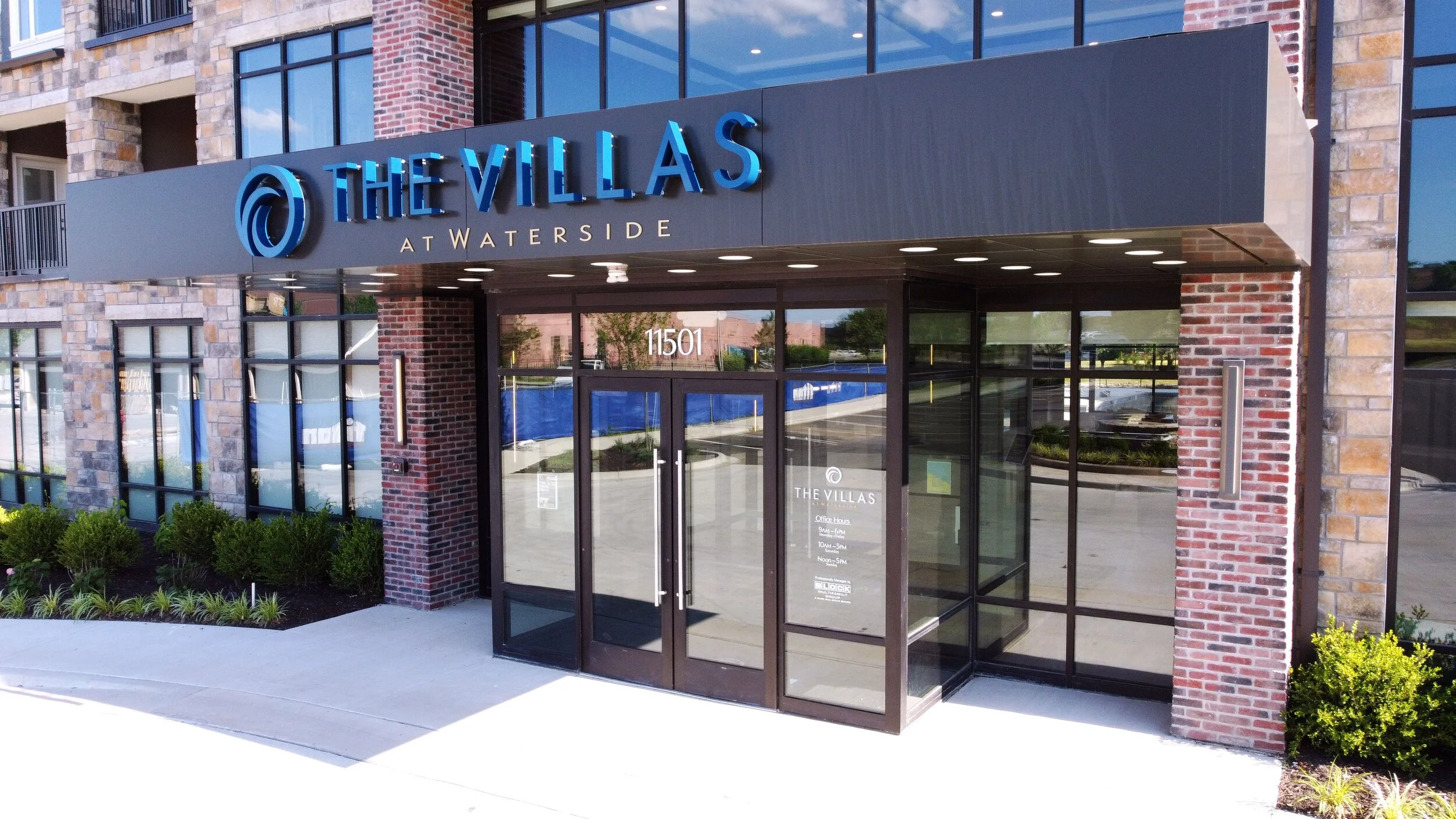Photo courtesy of Block & Company, Inc., Realtors
Kansas City feasts in food and beverage
KC SmartPort’s 12th annual industry briefing was held on June 24, focusing on the food and beverage industry and the growth of the Kansas City region as a hub for food logistics.
Jason Robertson, vice president, food + beverage, at CRB, joined Chris Gutierrez, president of KC SmartPort, on stage.
“What else connects our personal lives, our business lives, creates those life experiences besides food and beverage,” said Gutierrez.
From a temporary sidewalk stage, Gutierrez addressed a crowd of more than 300 seated at tables on 13th Street under the Kansas City Convention Center.
“There are a lot of things happening in food and beverage. Whether it’s what you eat, how it’s made, the production innovations that are happening, and of course, how is it distributed and delivered in an on-demand world,” Gutierrez said.
Currently, more than 670 industrial food and beverage operations call the Kansas City region home. This $125.4 billion Kansas City industry employs more than 25,500 people in food and beverage manufacturing, warehousing and distribution.
Gutierrez said that food and beverage projects have increased 64 percent year over year in the Kansas City market. In the last 18 months, several food and beverage companies, including Dot’s Pretzels, Hostess Brands, World Pantry, Pretzels, Inc. and Niagara Bottling, have come to the market.
KC SmartPort reported that the food and beverage companies attracted to the Kansas City area in the past two years have pledged to create more than 1700 jobs, invest more than $330 million and occupy nearly 3.5 million SF.
Nationally, the demand for cold storage in temperature controlled space is not meeting the supply; but, Kansas City has stepped up, Gutierrez said.
Liberty, Missouri will be home to the recently announced Heartland Cold Storage Logistics Center. Gutierrez said CBRE will announce in the near future another cold storage facility coming to the region.
“It’s coming and there’s more on the horizon. We’re meeting that demand. There’s a lot of need for cold storage in this region,” said Gutierrez.
Robertson said the consumer is driving how food production facilities are designed and built, how food is packaged and what foods are coming to grocery shelves.
“Really the millennials and Gen Zs are those that are looking at a different type of interaction with their food products. I quickly compare that to maybe what Kraft macaroni and cheese used to be to now where Annie’s is really one of those top products,” said Robertson.
Workforce issues present one of the most challenging aspects of the food and beverage industry, said Robertson.
“I think there’s certainly a quality of life that the food producer is going to have to address,” Robertson said.
The design and construction of new food plants in the post-pandemic world will need to account for social distancing.
Food processors, particularly in the meat processing industry, learned during COVID-19 that “you just can’t social distance by the way that those products are ultimately processed and packaged,” said Robertson.
The industry also must address the challenge of retaining workers in facilities with temperatures of 30 degrees.
“You want to keep that worker because the dollars you invest to recruit and retain and so then ultimately, how do we create an environment for them to succeed and be happy to go to work every day,” Robertson said.
Not only did online grocery sales explode during the pandemic, but so did subscription food box sales.
“I would say that’s the future. That’s here to stay,” said Robertson.
Robertson said the industry will need to address how delivered food is packaged as some consumers complain about the use of too much plastic.
The industry also must evaluate packaging within the grocery stores. With more shoppers having groceries delivered to their homes or directly to their cars, Robertson asked whether the industry needs as many packaging types of materials to catch the shopper’s attention.
Gutierrez and Robertson discussed the advantages of the Kansas City region to the food production/food distribution industry, an industry facing rising costs and supply chain challenges.
Robertson noted that the average age of truckers is “north of the high 50s”, and that it takes several days to move product from coast to coast. Also, wages and costs per square foot in the Midwest are a fraction of the costs on the coasts.
“I just think that the play for logistics and more of a centrally located play is here to stay - will always be here to stay. I think that’s what we need to rally around as we recruit new prospects to the region,” Robertson said.
Niagara Bottling to open new KCMO facility
Niagara Bottling, LLC, a family-owned beverage manufacturer headquartered in Diamond Bar, Calif., will soon open a new production facility in Kansas City, Mo.
“Niagara Bottling is excited to establish a second manufacturing facility in Kansas City, Missouri,” said Brian Hess, executive vice president for Niagara Bottling, LLC. “This new facility will allow Niagara to produce new beverage products and serve important customers in the Midwest.”
Niagara Bottling, LLC, will initially create nearly 100 jobs and invest approximately $156 million in a 634,000-SF facility at 11400 N. Airworld Drive.
Mark Long of Newmark Zimmer led the real estate search for this project.
“We want to congratulate Niagara Bottling on their expansion in the Kansas City region,” said Governor Mike Parson. “This investment and the new jobs it will create will provide even more opportunities for Missourians to support their families and advance their careers right here in our state.”
The company cited the Kansas City region’s central location, availability of skilled talent and strong community relationships as key drivers of its decision.
“We appreciate the highly competitive and attractive combination of location, infrastructure, logistics, and workforce in the Kansas City region,” said Hess. “Niagara has built a strong team and community relationships in Kansas City, and looks forward to maintaining our leadership in the areas of manufacturing, innovation, supply chain and overall environmental stewardship.”
The Kansas City region’s $226 billion food and beverage industry continues to see growth with more than 660 companies located in the area and a workforce of more than 25,000 employed in food and beverage manufacturing, warehousing and distribution.
“Niagara Bottling, LLC’s selection of Kansas City reinforces our region’s position as a growing hub for food and beverage logistics in the U.S.,” said Tim Cowden, president and CEO of the Kansas City Area Development Council. “We are pleased to welcome the new operation and are eager to watch the company expand.”
Greene means go for Cushman & Wakefield office broker
Andrew Greene, a senior associate at Cushman & Wakefield, has worked over 12 years in the commercial real estate space, with experience in sales and leasing, property management and lease portfolio management.
As part of the office services team, Andrew represents landlords, tenants and corporate clients with a strategic focus on establishing and achieving client goals and objectives while managing client relationships.
“I started my career in brokerage and then shifted to the property management side of the business for a few years, gaining valuable insight into the operation and management of retail, office and industrial assets in the Kansas City area. In 2012, I moved to Dallas and served as a director of real estate for a national company that provided business services to orthodontists and pediatric dentists,” Greene said.
“In the spring of 2019, my family and I moved back to Kansas City and I joined Cushman & Wakefield as a broker. I teamed up with Suzanne Dimmel and Leonard Popplewell, where we function as a three-person team. I was drawn to Cushman & Wakefield given its global platform, resources and focus on quality and delivery.”
MWM: What is your bread and butter today at Cushman & Wakefield?
Office leasing and sales throughout Kansas City and its submarkets. Given my background, I also have a concentration on medical/healthcare real estate. I really enjoy learning about businesses and their operations while assisting clients in establishing their real estate goals and providing a strategic plan on how to get there using my knowledge of the market.
MWM: What market trends are you seeing with your clients?
We are seeing companies return to the office coming out of the pandemic, and expect this trend to continue as the year goes on. I think next comes a cycle of planning to determine where companies go from here. Our team is actively involved in conversations related to strategic workplace solutions and how that pertains to clients’ short- and long-term visions.
MWM: What do you see the local and national CRE rebound including?
Flexibility. I think we all have heard and continue to hear flexibility. The return to the office seems to carry a focus on flexibility and hybrid models as employers look to bring employees back to the office.
Additionally, we are seeing a draw to amenity-rich, Class A space. Companies are looking to take less space but upgrade quality and build an inviting workplace for employees to return to.
Lastly, we have seen local businesses purchasing small office buildings in an effort to control their real estate and take advantage of low interest rates.
MWM: What have you done to adapt to the changes in CRE?
I think the pandemic has brought a new layer of customer service and level of detail to the everchanging market. It seemed like new reports, articles and news stories were coming out with information almost daily. I felt very fortunate to have a variety of resources available to me through Cushman & Wakefield, especially with our global presence. We were able to keep our clients up to date with information and industry trends.
MWM: What challenges and opportunities are your main asset classes facing now?
I’d say for challenges: Work-from-home business models, the sublease market and construction costs.
As for opportunities, we are beginning to see more tours in the market and companies identifying their needs. People have started to identify what they want their office to be in the future, and now we are helping them realize that vision.
MWM: What’s your viewpoint on the current state of the market in Kansas City?
I am optimistic about Kansas City for a variety of reasons. Kansas City has a strong labor market, which is diversified by a variety of industries. The diverse employment base has allowed the market to weather economic challenges and expand regardless of individual sectors or trends. The city has historically been a logistics hub, while more recent developments have seen the city become a center for technological and medical innovation as well. I am looking forward for good things to come.
MWM: Any other insight you’d like to share with us?
We are currently working on a number of strategic consulting projects with clients and are looking forward to new agency leasing listings and tenant rep opportunities. Our team is excited to further assist current clients and prospects with their real estate needs as they return to the office.
MWM: How can prospects contact you for more information?
I can be reached by phone at 816-216-5654 or by email at andrew.greene@cushwake.com.
If you, or someone you know, would like to be considered for MWM’s Broker Spotlight, please email lisa@metrowriemedia.com.







